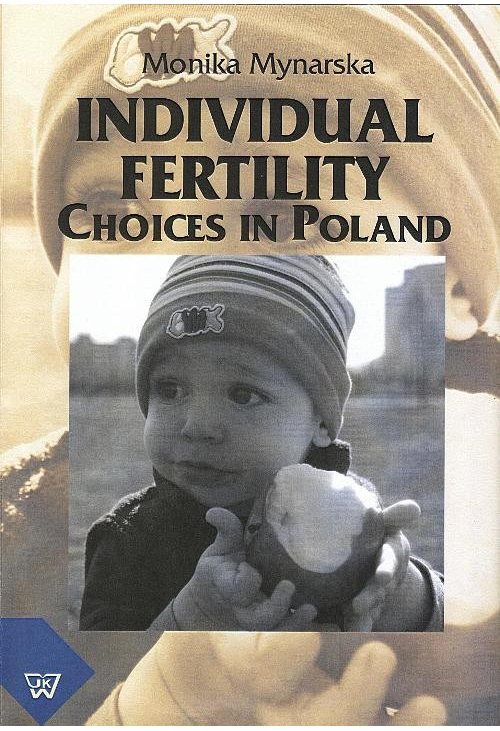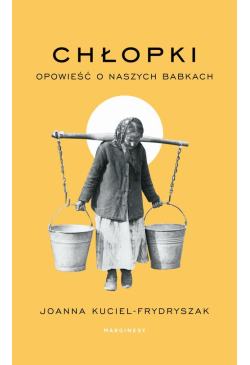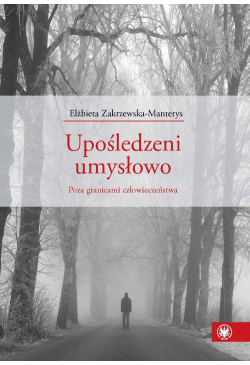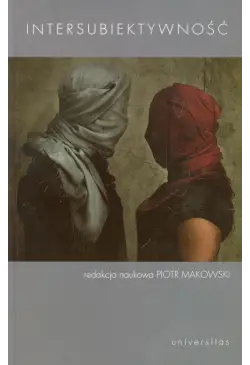
- -14%
ebook Individual Fertility Choices in Poland
Odkryj, jakie procesy kształtują indywidualne wybory dotyczące rodzicielstwa w Polsce, odzwierciedlone w znaczącym spadku liczby urodzeń. Ta fascynująca książka, napisana przez Monikę Mynarską i wydana przez Wydawnictwo Naukowe UKSW w 2009 roku, skupia się na doświadczeniach młodych Polaków związanych z podejmowaniem decyzji o rodzicielstwie.
Zgłębij tajniki ebooków dostępnych w naszym sklepie z ebookami i poznaj najlepsze wydania elektroniczne, które możesz pobrać i czytać bez wysiłku. Ciesz się wygodą czytania e-booków w formacie PDF i odkryj bogaty katalog ebooków literatury pięknej oraz bestsellerów.
"Individual Fertility Choices in Poland" to nie tylko akademicka publikacja cyfrowa, ale także inspirująca podróż w głąb indywidualnych wyborów i ich wpływu na społeczeństwo. Zanurz się w świat e-booków i zdobądź wiedzę, która zmieni Twoje postrzeganie rodzicielstwa w Polsce.
Spis treści ebooka Individual Fertility Choices in Poland
Acknowledgements 9Chapter 1: Introduction 11
1.1. Background of the study and research aims 11
1.2. Outline of the book 16
Chapter 2: The Polish Case 19
2.1. Fertility patterns in Poland 20
2.1.1. Fertility 20
2.1.2. Nuptiality and childbearing 23
2.1.3. A note on migration 24
2.1.4. Summary 25
2.2. Context I: The ever-changing economic and institutional landscape 26
2.2.1. From a centrally planned to a free market economy 26
2.2.2. Unemployment 27
2.2.3. Material situation of Poles 29
2.2.4. Importance of human capital: Education 30
2.2.5. Women in the labour market 31
2.2.6. Provision of childcare 33
2.3. Context II: The cultural heritage 34
2.3.1. The Catholic Church 35
2.3.2. Strong family 35
2.3.3. Attitudes towards marriage and gender roles 36
2.3.4. Contraception and abortion 37
2.4. Summary 39
Chapter 3: Theoretical Approaches to Fertility Decline 41
3.1. Theories of low fertility 41
3.1.1. Demographic transitions and post-materialistic values theory 41
3.1.2. Gender Equity Theory 43
3.1.3. Globalisation and uncertainty theory 44
3.1.4. Going micro: combining sub-narratives 45
3.2. Individual behaviour: fertility choices 50
3.2.1. Microeconomic approach 50
3.2.2. Socio-psychological approach: Theory of Planned Behaviour 53
3.2.3. Socio-psychological approach: Traits-Desires-Intentions-Behaviour 56
3.3. Fertility choices in Poland: Individual perspectives 58
3.3.1. The model of individual behaviour: basic assumptions and definitions 60
3.3.2. Research questions 62
Chapter 4: Methodology of the Research: Qualitative Interviews 65
4.1. Rationale for the methodology 65
4.2. Sample selection and characteristics 66
4.3. Method 72
4.3.1. Problem-centred interviews 73
4.4. Qualitative data analysis 78
4.4.1. Open coding 79
4.4.2. Axial coding 80
4.4.3. Selective coding 82
4.5. A note on the presentation of the results 83
Chapter 5: Motivation to Parenthood 85
5.1. Positive attitudes: Expected values of children 85
5.2. Beliefs about parenthood and childlessness 88
5.2.1. Immediate benefits: A natural course of life events 88
5.2.2. Delayed benefits: Fear of getting old 90
5.2.3. Advantages of childlessness and competing goals 92
5.3. Desire to have children, gender difference, and biology 94
5.4. A child or children? 100
5.5. Summary: How is the motivation to have a child formed? 102
Chapter 6: Behavioural Control: Conditions for Parenthood 107
6.1. Actor-related behavioural control 107
6.1.1. Individual development 108
6.1.2. Relationship development: Marriage 109
6.1.3. Actor-related control: Summary 113
6.2. Situation-related behavioural control: Economic and institutional aspects 114
6.2.1. Education 115
6.2.2. The housing situation in Poland 116
6.2.3. Job and income 118
6.2.4. Contradictions in narrations: Is money crucial, and when? 120
6.2.5. Financial resources and the number of children 122
6.2.6. Costs of children: Investing money 123
6.2.7. Costs of children: Investing time 127
6.2.8. Job insecurity 129
6.2.9. (Un)Protected mothers 130
6.2.10. Professional career or earning money? 133
6.2.11. Childcare arrangements 136
6.2.12. Childcare: What about men? 139
6.2.13. Role of the state 141
6.2.14. Situation-related control: A summary 142
6.3. Summary: In what way does behavioural control influence fertility choices? 145
Chapter 7: Understanding a Couple’s Choice: Paths to Parenthood 149
7.1. Behavioural strategies (not) leading to pregnancy 149
7.2. Understanding transitions to parenthood 162
7.3. The process leading to fertility choices – a few general remarks 169
7.4. Summary: Understanding a couple’s choice 170
Chapter 8: Concluding Discussion: Old Values, New Context 173
8.1. Summary of the findings 173
8.2. Fertility choices: Anomie or adaptation? 178
References 185
Appendix I Information about the respondents 209
Appendix II Interview guideline 211
Szczegóły ebooka Individual Fertility Choices in Poland
- Wydawca:
- Wydawnictwo Naukowe UKSW
- Rok wydania:
- 2009
- Typ publikacji:
- Ebook
- Język:
- polski
- Format:
- Liczba stron:
- 213
- Miejsce wydania:
- Warszawa
Recenzje ebooka Individual Fertility Choices in Poland
-
Reviews (0)

Na jakich urządzeniach mogę czytać ebooki?
- -14%















@CUSTOMER_NAME@
@COMMENT_TITLE@
@COMMENT_COMMENT@